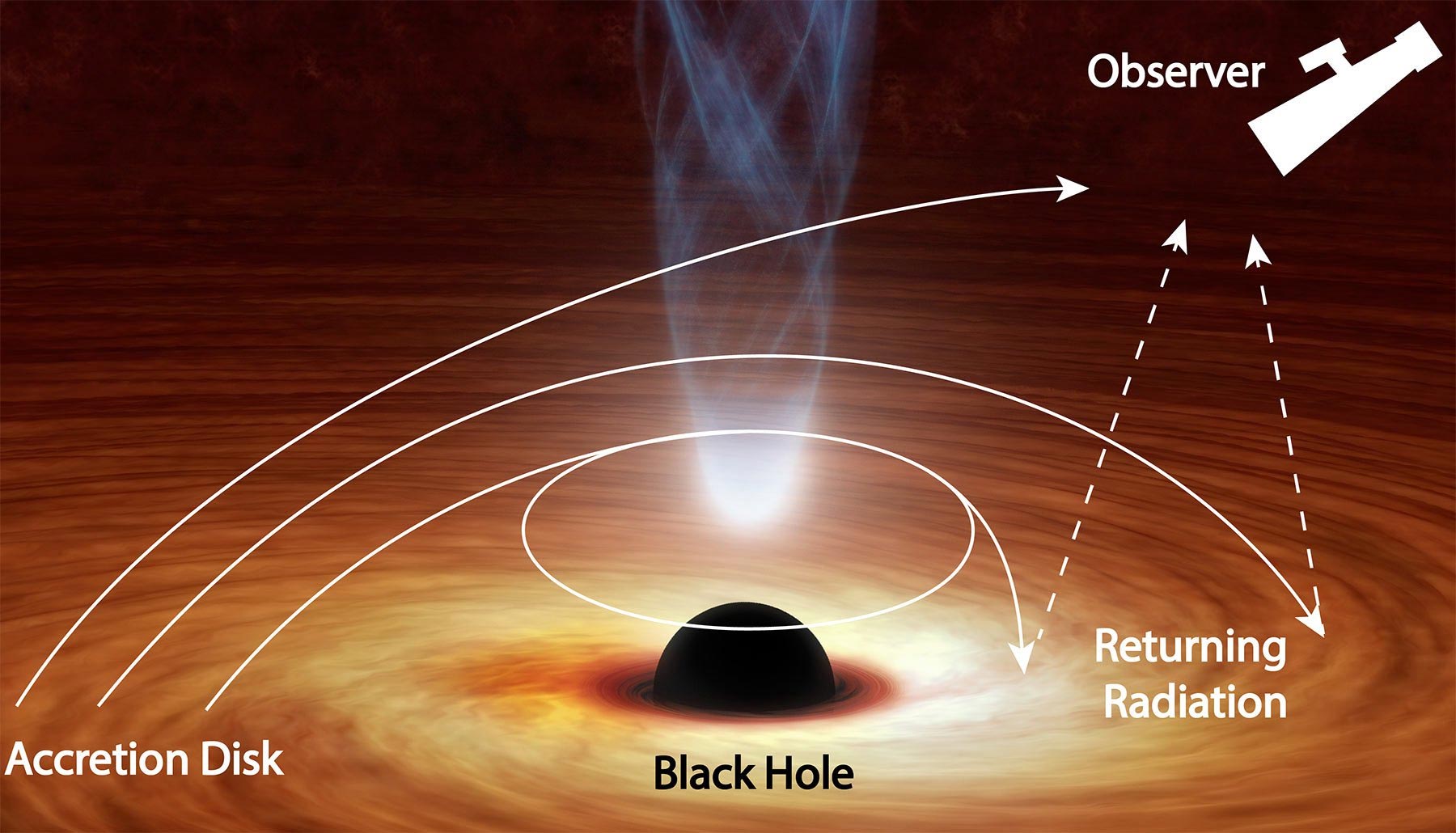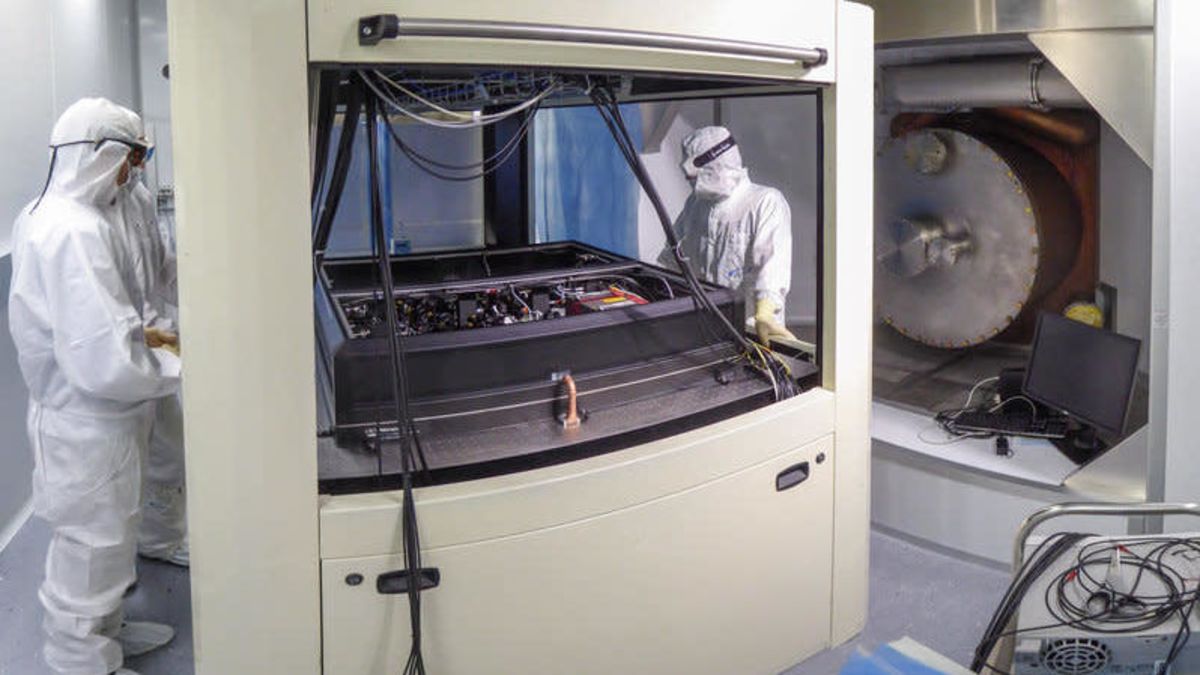
The black hole’s mass is about 8,000 times bigger than the black hole in the centre of the Milky Way. If the Milky Way’s black hole wanted to grow that fat, it would have to swallow two thirds of all the stars in our galaxy.

Can a massive star collapse into a black hole without first exploding in a supernova blast? That’s at least one explanation for the disappearance of a star 2.5 mil times brighter than the sun in a dwarf galaxy 75 mil light years away.

Astronomers studying what they thought was a double star system 1,000 light years from Earth in the southern constellation Telescopium stumbled on what must be a stellar mass black hole.

A new study offers evidence that, not all of the light streaming from a black hole’s surrounding disk easily escapes. Some of it gives in to the monstrous pull of the black hole, turns back, and then bounces off the disk and escapes.

The biggest explosion seen in the universe has been found. This record-breaking, gargantuan eruption came from a black hole in a distant galaxy cluster hundreds of millions of light years away.

A new method, the result of decades of research, has allowed researchers to suppress vacuum noise and extend the reach of the gravitational wave detectors.

Astronomers have measured a 40 billion solar mass black hole in the Holm 15A galaxy. Their results could lead to even more massive black holes.

Extensive observations indicated the presence of three supermassive back holes in the three galaxies NGC 6240 that are the process of merging. Up until now, such a concentration of supermassive black holes had never been discovered in the universe.

Astronomers have spotted three supermassive black holes (SMBHs) at the center of three colliding galaxies a billion light years away from Earth. That alone is unusual, but the three black holes are also glowing in x-ray emissions.

Observing Sagitarius A ( a supermassive balck hole in the center of our galaxy ) with the Keck's telescope, scientists just watched as its brightness bloomed to over 75 times normal for a few hours. Astronomers aren’t certain what caused the flaring.

As if black holes weren't mysterious enough, astronomers have found an unexpected thin disk of material furiously whirling around a supermassive black hole at the heart of the magnificent spiral galaxy NGC 3147, 130 million light-years away.

Gravitational waves from the collision of two neutron stars have been detected for the second time ever — along with another, less certain signal that a neutron star being swallowed by a black hole.

The Event Horizon Telescope (EHT) has revealed the first-ever image of a black hole. The black hole in this image resides at the center of M87, a massive galaxy that’s in the Virgo cluster of galaxies.

Astronomers from Japan, Taiwan and U.S. have discovered 83 quasars powered by supermassive black holes in the distant universe, from a time when the universe was only 5 percent of its age.

Recent U.S. study suggests how surveys using gamma telescopes could find evidence of spacecraft powered by tiny artificial black holes. The concept of a black hole-powered spacecraft was first introduced by science fiction author Arthur C. Clarke.